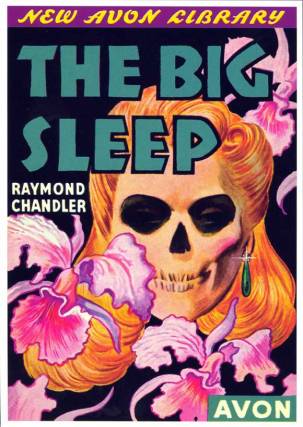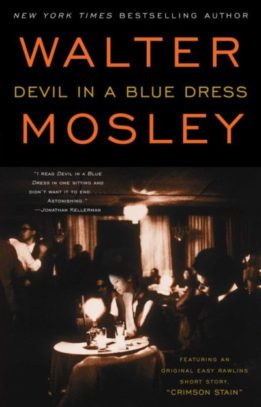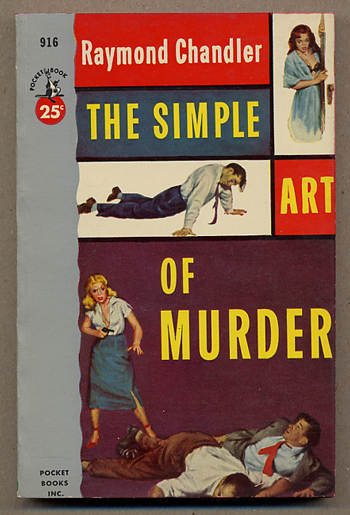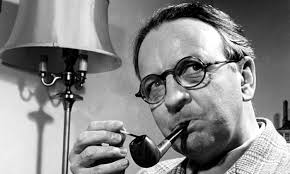Almost exactly a year ago, I reported to you that I had enrolled in an evening course on Scandinavian crime fiction at Stanford University. If you follow my exploits with any regularity, you all know how that turned out!

(above) The mood evoked when reading a Scandinavian crime novel.
My professor was an extremely affable woman who was more than patient with my ambivalence over the tortured Swedish Nazi pedophiles we read about each week. She listened to my plaintive request (on more than one occasion, both in print and in person) to have the university offer a course on the Golden Age of detective fiction. The most encouragement she could offer was to say, in tones neither arch nor condescending: “Why don’t you teach one yourself?”
I don’t know if that will ever happen, but the other day, my Stanford catalogue arrived, and to my amazement, a new course was being offered. No, it wasn’t called Agatha and Company: How GAD Fiction Rocked the World Between the Wars and Why Only the Most Insightful People on Earth Still Read – and Blog – About It. But Stanford – you’re getting warmer . . .
I’ve enrolled in a ten-week course, beginning in April, called Classic American Detective Novels and Films. Here’s the blurb:
“The fast-talking, sometimes duplicitous, but ultimately honorable American detective has become an essential figure in American novels, plays, TV series, and award-winning films, and their creators are now comfortably ensconced in the Library of America along with William Faulkner, John Steinbeck, and other icons of American writing. This course will offer students an introduction to the classic novels and films that brought American detective fiction to new artistic heights.

“Our exploration will begin with Edgar Allan Poe’s Dupin, the basis for Arthur Conan Doyle’s Sherlock Holmes. It will then lead us to Mark Twain, who uniquely combines detection, slavery, and race in his short novel Pudd’nhead Wilson;


“Dashiell Hammett’s Sam Spade and Raymond Chandler’s Philip Marlowe;

“. . . and Walter Mosley’s Easy Rawlins, an African American detective reluctantly following Marlowe down the mean streets of a newer but equally dark Los Angeles.
“We will also engage with Chandler’s great essay, “The Simple Art of Murder,” in which he explains why he loathes and detests both Agatha Christie and Dorothy Sayers. As we read these classic works, we will watch and take apart some masterpieces of cinema, including Double Indemnity, The Big Sleep, The Maltese Falcon, Laura, L.A. Confidential, and Rear Window. By the end of the course, students will have explored the best that the American detective tradition has to offer.”

The GAD blogger’s version of picking at a scab is to bring up the topic of all those “learned scholars” who seemed to like nothing better than to deride the classic British mystery. We all made a wonderful ruckus about it over at JJ’s place when he discussed two essays by Edmund Wilson. I’m really looking forward to sinking my fangs into – getting my fists on – er, reading Chandler’s essay where that traitor learned scholar tries to make mincemeat of Agatha Christie and her ilk and show absolutely no class toward a fellow mystery writer whose success overrides his own by billions of copies of books sold.
I have no real opinion on the matter . . .

 successful mystery author vs. jealous twit
successful mystery author vs. jealous twit
As always, an extended learning course tends to focus on a topic in broad strokes and hit only the big names. I did my senior dissertation at university on Mark Twain, (I wanted Dickens but he wasn’t offered, and there was no way in hell that I was going to choose Melville!) but my furshlugginer professor decided to skip Pudd’nhead Wilson! So I’m looking forward to reading that for the first time. But it’s clear that this course is focusing only on the “hard-boiled” school, as if that was all that American crime fiction had to offer. Still, I do love Hammett, and I’m excited to watch the films again. Maybe somebody will be able to explain The Big Sleep to me at last! Still, at the very least, mention should be made of those Americans who bridged the classic style with a New World feel . . . (and sometimes forgot the Pilgrims ever left for Jamestown.) This class would have been really special if the booklist had included S.S. Van Dine, Ellery Queen, John Dickson Carr and Rex Stout!
I want to assure you all that you will have a backseat view of the course as I take it and that I hereby vow to be a voice of reason as comparison arises between the authors we love so well and their younger, cruder brothers. If there are any questions you want me to ask, write them in the comments section below.
Thus, the dream still eludes me. But this time it looks like I’m in for a wonderful catnap!
Good luck Brad! Hope this course turns out more to your liking. To be a fly on the wall of the session you guys discuss Chandler’s essay… At least looking at Rear Window should be fun (that being the only film I’ve seen out of the above mentioned one).
LikeLiked by 1 person
It’s easily the best film on the list, Kate, but the others are amazing as well!
LikeLike
But Chandler is wonderful Brad. Hope you have a great time 😀
LikeLiked by 1 person
Sergio!! I fully intend to enjoy Chandler! I just hope I can understand him!!
LikeLike
I look forward to your reports, especially for the accompanying insightful commentary and for your colorful and humorous style (like those crossed words when you got going about Christie vs. Chandler)!
LikeLike
Awww, thanks, Christophe!
LikeLike
Congratulations. SO happy you’ll have something to occupy your time. And don’t think you’ll ever really understand The Big Sleep because it kinda sorta doesn’t make much sense. But Double Indemnity! Now there’s a really fun book. And one of those instances where a great book was made into a great movie. Doesn’t happen too often.
Also, we have to hang out some time soon! I still want to take you out to or have you over for dinner/lunch sometime. (Happy Birthday three months later.) Plus, Helen and I are starting a new tradition – the Yiddishe fruitcake! And no, it’s not an actual fruitcake but you’re next on the list to receive it.
LikeLike
I hate fruitcake, so your Yiddishe fruitcake better not be an actual fruitcake! But I love tradition, so I’ll bite. (Literally?)
Did Helen tell you we’re going to see The Boys in the Band?
LikeLike
Oh, this looks fabulous, Brad! Just fabulous! I hope you’ll have a very rich experience.
LikeLiked by 1 person
Just the thought of being in a roomful of fellow mystery lovers is what really thrills me, Margot. But a friend I play bridge with knows the professor and tells me she’s marvelous! 🙂
LikeLiked by 1 person
The fast-talking, sometimes duplicitous, but ultimately honorable American detective has become an essential figure in American novels, plays, TV series, and award-winning films, and their creators are now comfortably ensconced in the Library of America along with William Faulkner
On the first day of class, are you going to be the guy who raises his hand and points out that William Faulkner published a series of mystery short stories, compiled in Knight’s Gambit (one of which even won a prize in Ellery Queen’s Mystery Magazine)?
This does sound like a fun course. I’ll be interested to see if the likes of Ellery Queen, Kelley Roos, or Helen McCloy even get a mention. Well, I’m sure you’ll find a way…
I do want to explore your comment about the potential for having John Dickson Carr included in the class. At risk of having the entire internet throw a shoe at my head… Carr doesn’t (in my mind) classify as an American writer. I know, I know, I’m an idiot. He clearly doesn’t classify as a British author either (as we can see evidenced in the various collections and conferences). And yet….here is where I say something incredibly stupid and ignorant…
John Dickson Carr captured more of England to me than many of his British peers. I can imagine teeth crushing around the world with that statement, and I’m really just trying to have a fun discussion, but that is the sense that I have. Perhaps it’s really that the England that Carr captured resonates with me as a non-native. Still, when I think of Carr, I think of England.
Yes, I know he set several novels in the US, but those are the exceptions. It’s not like I feel that the Bencolin books “captured Paris”. I’m sure this all strikes the British readers as silly, but is it fair to say that Carr is more a British writer than an American writer? Well, maybe that’s a bad way to phrase is it. Carr certainly isn’t British, but perhaps you follow my question.
LikeLiked by 1 person
To boil it down – no, I don’t think Carr merits inclusion in this class, due to the nature of his work. He lived in England a long time, so while I can’t vouch for his accuracy myself, I tend to give him the benefit of the doubt. I think he wrote British-style mysteries with an American screwball sensibility. The Nine Wrong Answers feels American to me; it reminds me in tone of “The Most Dangerous Game.” But I agree that there is a British sensibility to Carr’s work through and through.
Now Queen would fit right in – if the professor wasn’t so stuck on “tough guys.” She’s clearly not going to focus on the puzzle element of these books (hence the idea that I haven’t achieved the dream yet!), but Cat of Many Tails would have fit in nicely! You’ll see when you read it.
LikeLike
Good luck, Brad. I hope you enjoy the course, and that you’ll interrupt everyone once in a while to make comparisons with those other American mystery writers that probably otherwise wouldn’t get a mention. 🙂
LikeLike
You betcha, Christian. These classes usually skewolder, and I’ll wager others will be fans.
LikeLike
I’ll look forward eagerly to your comments on Chandler’s essay … while I don’t agree with all of it, I think he was very perceptive and more analytical than most of his peers. And he was rather a champion of Freeman Wills Crofts, wasn’t he?
LikeLiked by 1 person
Was he? Arrrggghhh!!!
LikeLike
Here’s what Chandler says about Crofts his essay: “the soundest builder of them all when he doesn’t get too fancy.” That compliment is embedded in parentheses in a paragraph that criticizes one of Crofts’ most ludicrous plot devices, one that is a detective story “hackneyed device” as Carolyn Wells used to say. So I’d say he admired him but wasn’t exactly championing him.
Academia will always be focused on the hardboiled school. It’s the only aspect of crime fiction in the US that supposedly merits any discussion in scholars’ eyes. So of course there is a wealth of reference material and academic treatises for prospective crime fiction instructors to use as teaching tools and aid in raising discussion points. I’d so love to teach a course on American detective fiction and begin with the detective casebooks that were popular in the 19th century, sample some of the pre-Philo Vance work like Isabel Ostrander, Anna Katharine Green and Melville Davisson Post, then enter the pulp fiction era of the early 1920s which will eventually lead to Hammett and Chandler. But I’d not have anyone read either of them. Take that academia! There’s four full decades worth of fiction drawing on Poe, Conan Doyle and the translated French writers before the hardboiled school ever appears and it’s fascinating to see the evolution.
Have you read any of the books in the syllabus? You must’ve seen all the movies already. I think you ought to read up on Carroll John Daly and throw out that name in class and tell them that he paved the way for Hammett and Chandler. See what your instructor has to say about that!
I think these kinds of classes require that the teaching materials be available for purchase by the students. Carr, Queen, McCloy and other writers who have been out of print for decades would never make the cut. The alternative would be that the instructor supply all of the prospective students with used copies. Hardly likely, I’d say. But wouldn’t it be fun to take a course like that? One in which the bold teacher hands out old Dell mapbacks, Pocket Books and Bantam paperbacks and says, “OK, here’s what we’re reading. These are yours to keep, by the way.” It could be a course not only in discussing the book’s content, but also a cultural time travel lesson offering opportunity to talk about the way books were marketed (cover art, publisher’s imprints, magazine publicity) and how publishers created the mystique of the “whodunit” and kept it alive for nearly four decades.
LikeLike
Your last paragraph is absolutely brilliant. Yeah, it would never happen, but hey, for the cost of tuition you should be getting four or five 1940-60 edition books. Of course, the teacher would probably have to wipe out the eBay inventory to accomplish that, but it wouldn’t be dreadfully expensive.
I do like that whole point about how the book isn’t just the story, but also the physical object, with the art, dimensions, and feel of the time. I’m currently reading a 1980’s Zebra edition of a Carter Dickson novel, and it’s a different mindset compared to holding an old Dell/Avon/PB or even Berkley edition.
LikeLike
Ah, book covers! Check out some of Noah Stewart’s marvelous entries about covers. He dealt in books as a career, and one of the things I find fascinating is how oddly different it is to read a novel depending on one cover or the other. All those salacious semi-clad blondes on the Christie covers, or the semi-nude models or tough guys on Ellery Queen vs. the earlier moody covers . . . it would be the stuff of a great conversation!
LikeLike
The first time the Chandler essay is brought up just say “Agatha Christie wrote And Then There Were None. Are we done here?”
You should seriously do a blog post on mystery covers. My favorite Christie covers are the ones from I think 90s era with the silver backs and black embossed pictures.
LikeLiked by 1 person
Rick, I’m not sure what those covers are, and I can’t seem to bring them up with a search.
You should check out Noah Stewart’s blog. He is waaaayyyy more knowledgable about the history of books than anyone else I read, and he has done numerous wonderful posts about covers.
LikeLike
Brad, some of them are here. https://www.ebay.com/itm/Lot-of-12-Vintage-AGATHA-CHRISTIE-Books-Mystery-Suspense/202235380744?hash=item2f162b0408:g:ypgAAOSw7YlajNRp
LikeLike